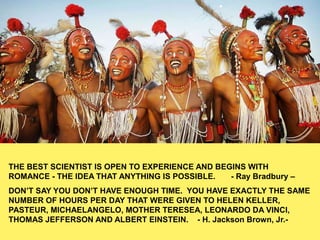CARBON CHEMISTRY PS (1).ppt
•Download as PPT, PDF•
0 likes•9 views
Carbon Chemistry
Report
Share
Report
Share

Recommended
Recommended
More Related Content
Similar to CARBON CHEMISTRY PS (1).ppt
Similar to CARBON CHEMISTRY PS (1).ppt (20)
Chemistry project on study of constituents of alloys

Chemistry project on study of constituents of alloys
Recently uploaded
Molecular and Cellular Mechanism of Action of Hormones such as Growth Hormone, Prolactin, InsulinMolecular and Cellular Mechanism of Action of Hormones such as Growth Hormone...

Molecular and Cellular Mechanism of Action of Hormones such as Growth Hormone...Ansari Aashif Raza Mohd Imtiyaz
Antibiotics are medicines that fight infections caused by bacteria in humans and animals by either killing the bacteria or making it difficult for the bacteria to grow and multiply. Bacteria are germsABHISHEK ANTIBIOTICS PPT MICROBIOLOGY // USES OF ANTIOBIOTICS TYPES OF ANTIB...

ABHISHEK ANTIBIOTICS PPT MICROBIOLOGY // USES OF ANTIOBIOTICS TYPES OF ANTIB...ABHISHEK SONI NIMT INSTITUTE OF MEDICAL AND PARAMEDCIAL SCIENCES , GOVT PG COLLEGE NOIDA
Recently uploaded (20)
Efficient spin-up of Earth System Models usingsequence acceleration

Efficient spin-up of Earth System Models usingsequence acceleration
Costs to heap leach gold ore tailings in Karamoja region of Uganda

Costs to heap leach gold ore tailings in Karamoja region of Uganda
SaffronCrocusGenomicsThessalonikiOnlineMay2024TalkOnline.pptx

SaffronCrocusGenomicsThessalonikiOnlineMay2024TalkOnline.pptx
Information science research with large language models: between science and ...

Information science research with large language models: between science and ...
Vital Signs of Animals Presentation By Aftab Ahmed Rahimoon

Vital Signs of Animals Presentation By Aftab Ahmed Rahimoon
POST TRANSCRIPTIONAL GENE SILENCING-AN INTRODUCTION.pptx

POST TRANSCRIPTIONAL GENE SILENCING-AN INTRODUCTION.pptx
Vital Signs of Animals Presentation By Aftab Ahmed Rahimoon

Vital Signs of Animals Presentation By Aftab Ahmed Rahimoon
Molecular and Cellular Mechanism of Action of Hormones such as Growth Hormone...

Molecular and Cellular Mechanism of Action of Hormones such as Growth Hormone...
ABHISHEK ANTIBIOTICS PPT MICROBIOLOGY // USES OF ANTIOBIOTICS TYPES OF ANTIB...

ABHISHEK ANTIBIOTICS PPT MICROBIOLOGY // USES OF ANTIOBIOTICS TYPES OF ANTIB...
CARBON CHEMISTRY PS (1).ppt
- 1. THE BEST SCIENTIST IS OPEN TO EXPERIENCE AND BEGINS WITH ROMANCE - THE IDEA THAT ANYTHING IS POSSIBLE. - Ray Bradbury – DON’T SAY YOU DON’T HAVE ENOUGH TIME. YOU HAVE EXACTLY THE SAME NUMBER OF HOURS PER DAY THAT WERE GIVEN TO HELEN KELLER, PASTEUR, MICHAELANGELO, MOTHER TERESEA, LEONARDO DA VINCI, THOMAS JEFFERSON AND ALBERT EINSTEIN. - H. Jackson Brown, Jr.-
- 2. CARBON CHEMISTRY Atomic Number 6 Atomic Mass Average: 12.011 Melting Point: 3823 K (3550°C or 6422°F) Boiling Point: 4098 K (3825°C or 6917°F) Density: 2.267g/cu.cm. CARBON HAS FIVE KNOWN ALLOTROPES (crystal form): AMORPHOUS GRAPHITE DIAMOND FULLERENE MAGNETIC CARBON NANOFOAM NOTE: TUNGSTEN HAS THE HIGHEST MELTING POINT OF ANY METAL AT 3422o C. IRON HAS A MELTING POINT OF 1535o C.
- 3. protons neutrons mass number carbon 12 6 6 12 carbon 13 6 7 13 carbon 14 6 8 14 ISOTOPES OF CARBON
- 4. CARBON DATING THE AMOUNT OF 14C REMAINS APPROXIMATELY CONSTANT IN THE ATMOSPHERE BECAUSE 14C IS BEING FORMED IN THE UPPER ATMOSPHERE THROUGH NEUTRON CAPTURE. 14 7N + 1n 14 6C + 1p CARBON-14 DECAYS WITH A HALF LIFE OF 5715 YEARS. 14 6C 14 7N + 0e WE ASSUME THAT THE RATIO OF CARBON 14 TO CARBON 12 HAS BEEN CONSTANT FOR AT LEAST 50,000 YEARS.
- 5. HERE ARE THREE WAYS OF REPRESENTING THE MOLECULE METHANE. CARBON CAN FORM 4 COVALENT BONDS AS IT HAS 4 VALENCE ELECTRONS.
- 7. ONE ALLOTROPE OF CARBON IS DIAMOND. ONE CARBON ATOM IS BONDED TO FOUR OTHER CARBON ATOMS. THIS PROVIDES A VERY STRONG STRUCTURE, MAKING DIAMOND THE HARDEST MATERIAL KNOWN.
- 8. ANOTHER CRYSTAL FORM OF CARBON IS GRAPHITE. HERE, CARBON FORMS 3 COVALENT BONDS AND HAS ONE FREE ELECTRON.
- 9. THE SAME KIND OF BONDING WOULD BE USED IN FULLERENES. A C60 FULLERENE
- 10. Creative Chemistry Interactive Molecular Models - Carbon Allotropes
- 11. THE TABLE BELOW COMPARES THE PROPERTIES OF GRAPHITE AND CARBON - TWO ALLOTROPES OF CARBON THAT USE DIFFERENT BONDING. Diamond Graphite Boiling Point 4827 C 4827 C Melting Point 3550 C 3550 C Hardness Hardest sub. Known Soft Conductivity Insulator Good conductor Density 3.514 g/cm3 2.26 g/cm3 DO DIAMONDS BURN??
- 12. Indeed, diamonds do burn. However, since they're pure carbon, and in the burning process are converted to carbon dioxide (only), there is no ash residue whatever. Had an interesting thing occur once when a home burned down and a rather "costly" jewelry piece was lost. It turned out that what was thought to be a diamond was found amid the melted gold remains of the setting. The stone was completely intact and undamaged. It was later discovered to be a cubic zirconia (fake diamond) that would not burn. The fellow's wife was not impressed that her husband would have fooled her into thinking he had spent big money on a diamond when he had actually bought her a vastly less expensive cubic zirconia. Regards, ProfHoff
- 13. GRAPHITE IS THE STABLE ALLOTROPE AT ROOM TEMPERATURE. In 1955 GE developed a process to make industrial diamonds. Graphite is heated in the presence of a metal catalyst at temperatures of from 2000 to 3000 K and pressures of 125,000 atm.
- 14. THERE IS AN ENTIRE BRANCH OF CHEMISTRY DEVOTED TO THE CHEMISTRY OF CARBON COMPOUNDS - ORGANIC CHEMISTRY. THERE ARE SEVERAL BRANCHES OF ORGANIC CHEMISTRY: 1) BIOCHEMISTRY - THE CHEMISTRY OF LIVING ORGANISMS 2) POLYMER CHEMISTRY - THE CHEMISTRY OF VERY LARGE MOLECULES OF REPEATING STRUCTURE 3) ORGANIC SYNTHESIS - THE SCIENCE OF BUILDING MOLECULES OF GIVEN STRUCTURES 4) ORGANIC ANALYSIS - COMPOSITION AND STRUCTURE DETERMINATION